Blythe Wilderness Areas and DTC
North of Blythe, California, is one of the most un-populated desert areas in the U.S. This condition is abetted by its remoteness, dryness, and the designation of multiple wilderness areas in the region. It’s vast, empty, beautiful, and lonely. It has become one of our favorite California destinations. If you didn’t know it already, we’re boondockers, loving off-grid living with no hookups of any kind.
If you look at a map of the southeast corner of California, you’ll see the medium sized town of Blythe, right on I-10 near the Arizona border. Look closely, and you’ll see an area bounded by SR-177 on the west, US-95 on the east, I-10 to the south and SR-62 to the north. The only paved road in this entire region is Midland Road, and it turns to dirt halfway to Rice.
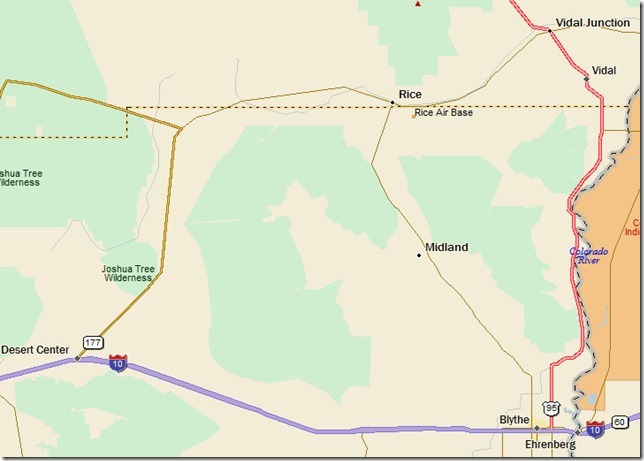
We camped about 15 miles out of Blythe, to the east of Midland Road near the powerline road. Not shown on this large-scale map, it’s just below the “Midland” township identifier. By the time we got a mile off the road, we had the desert to ourselves. In three days’ time, no person or vehicle passed by our camp.
And no wonder, this isn’t a campground or RV site or even an LTVA (BLM Long Term Visitor Area). It’s just empty BLM land that anyone is allowed to visit and stay on. No designated sites, few roads, no toilets, tables, water or facilities of any kind. It’s sometimes called “dispersed camping”. We are provided with free sunshine, plentiful silence, and nights that are darker than the soul of a goat. Here’s a shot of the powerline road leading up into the hills. The microscopic white dot, just right of center, is Howie, our 27-foot motorhome.
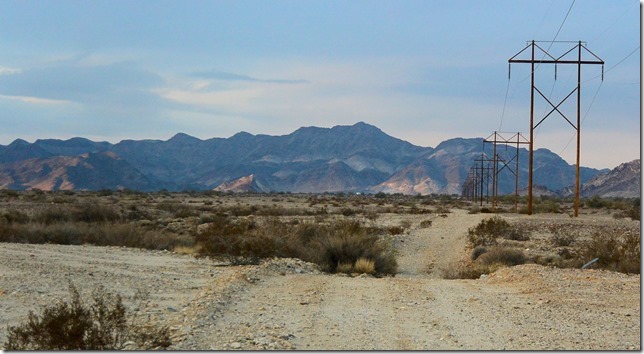
The other benefit we get in this area is literally hundreds of miles of dirt roads, and limitless expanses of valleys and hills, to drive, hike and explore. We took one of our days here to do just that, and we drove from Midland Road west across three mountain ranges to get to SR-177. (We had intended to make the big loop all the way around the Palen Mountains, but the going was so slow that we couldn’t accomplish that route in a single day.)
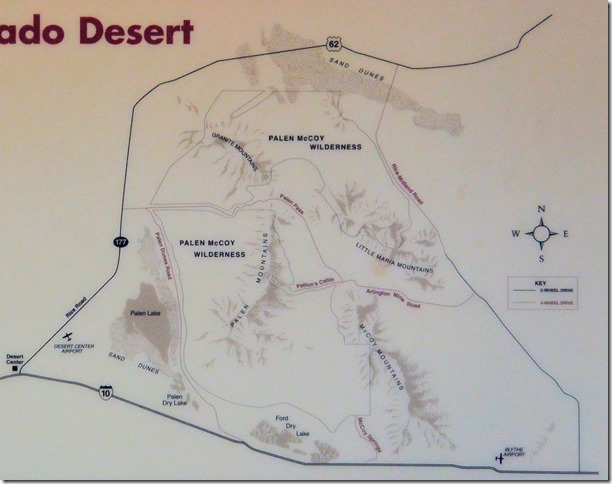
We turned off Midland onto the Arlington Mine Road, and began following maps and GPS coordinates across the desert. This mine road is very active, and we passed several large trucks on a working Monday (like the red one in the distance). The road was wide, smooth, and nicely graded, with only a touch of washboard.
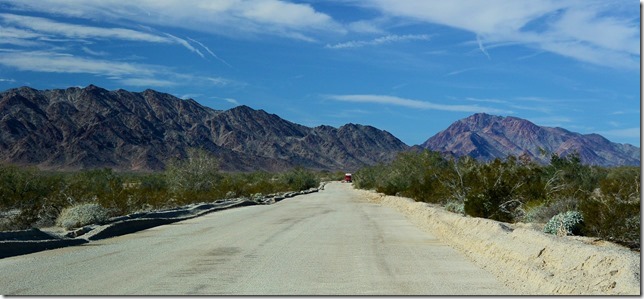
But after about seven miles, we passed by the active/working mine area. The road instantly became much more “interesting”. No grading, lots of runoff erosion, and tons and tons of rocks. Clearly not “in use”. And this was before we got to the Palen Pass, where we would find the terrain to progress well beyond the “interesting” level.
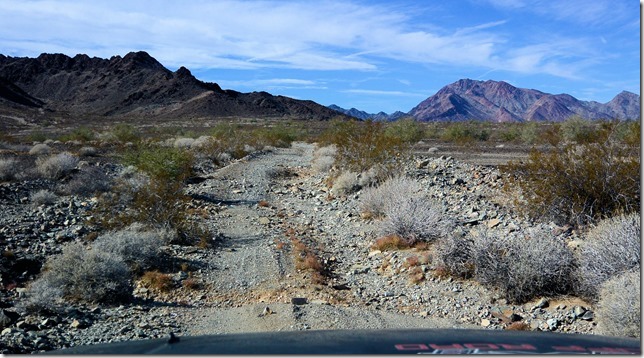
The Palen Pass we were approaching was, back in the War years, the ultimate “practice” battleground. This fascinating little area we were exploring was part of the much more vast Desert Training Center of WW2. The DTC was created by General George Patton, and it covered 350 miles wide by 250 miles high, reaching across California, Arizona, and Nevada. The 80,000 square miles of DTC were used to train over one million soldiers for the massive war effort, and their graduation exercises were live-ammunition battles through Palen Pass and the vicinities.
Today, fortunately no artillery fire is on-going, and the big threats going through the Pass are the extensive water damage to the road. We hit our most-challenging passages of all time on that road, and Ralph was trembling on his Good Years at some of the raunchy track that we made him traverse. This is a wide-angle view of the terrain through the Pass.
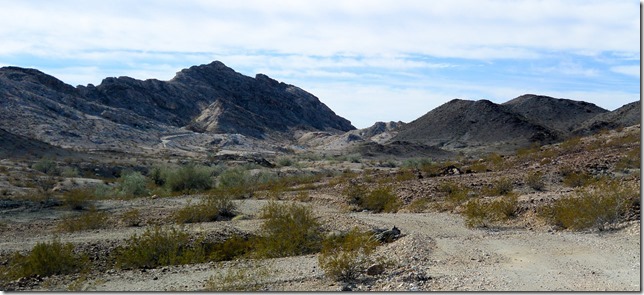
In addition to the threats of getting stuck, breaking suspension or driveline components, or even rolling over sideways on the steep stuff, we also had to deal with a small idiosyncrasy. Ralph has a lot of custom work done, including specially-fabricated driveline and skid plates. Turns out, when the suspension is hugely crossed up by going across impossibly deep gouges, the driveshaft rubs up against the fuel tank skid plate. This creates a hideous metallic shrieking sound akin to King Kong bending a battleship in half. It really freaked me out until I identified what it was.
After I figured it out, I realized I couldn’t fix the interference until I got back to my shop at home. I just had to live with it – – – all I had to do was deftly negotiate the suspension-torturing gouges in the road, while trying to ignore the steel-fingernails-on-blackboard screaming of Ralph’s underbody. Fun.
Typical stretch through the Pass. The guy on the right clearly did NOT have good trail technique. RIP.
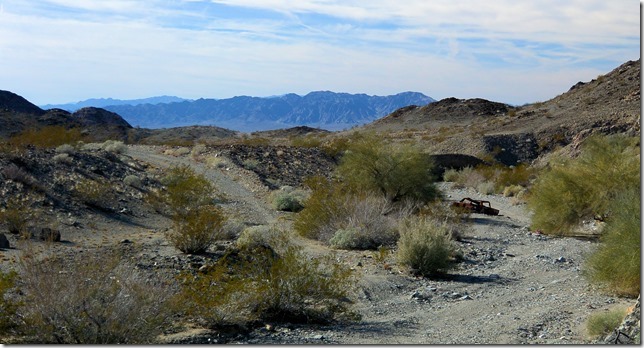
Challenges ranged from simple little washouts that we’d try not to drop a tire into – – –
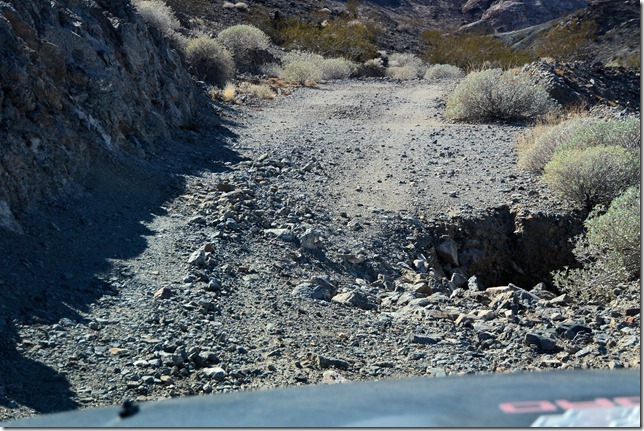
– – – to more aggressive gouges that needed aggressive avoidance – – –
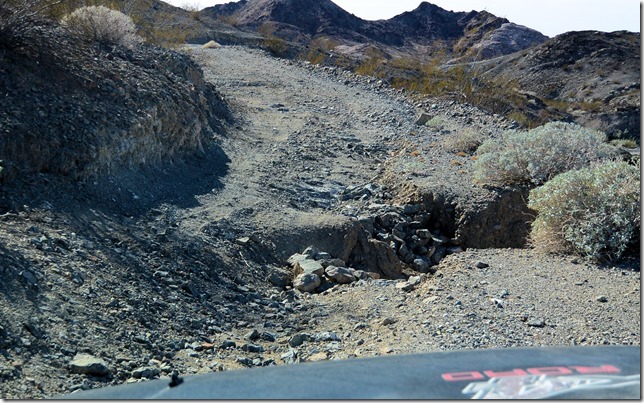
Karin started getting out and walking ahead, both to recon the road hazards and to take pictures of me and Ralph risking our pride across the obstacles.
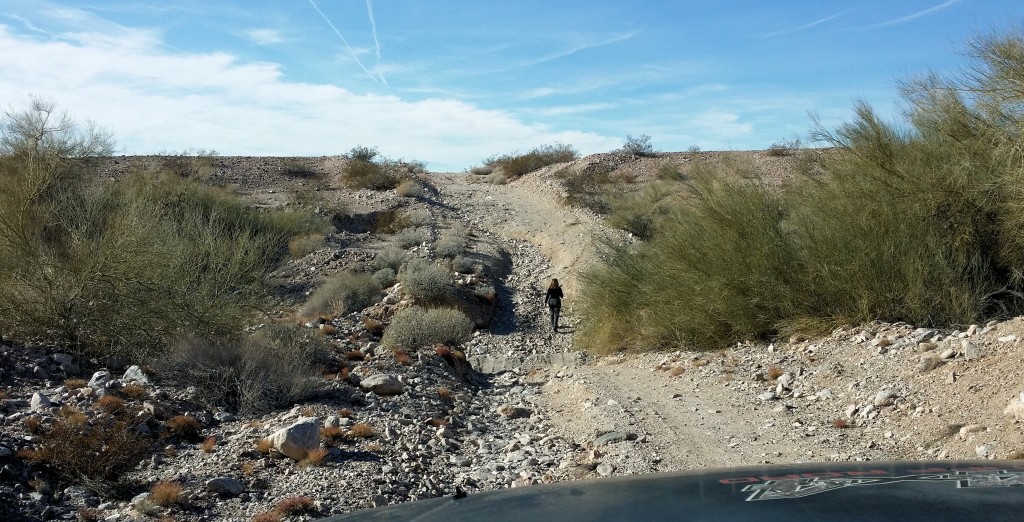
And eventually to a get-out-and-take-a-careful-look situation. For this torn-up road-turned-into-canyon, we had to meticulously plan tire placement, and were still rewarded with the howl of driveshaft-on-skidplate for 50 excruciating yards of lurching, twisting, lip-biting travel. However, nothing broken — except a sweat.
First, a careful recon – – –
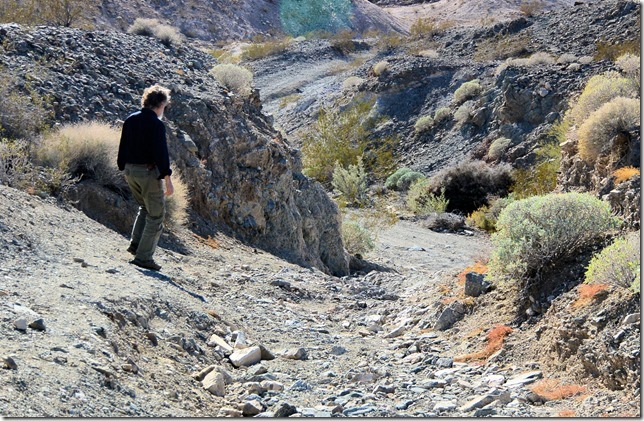
– – – then, Ralph timidly peeks around the corner at the tumble of rocks and ruts – – –
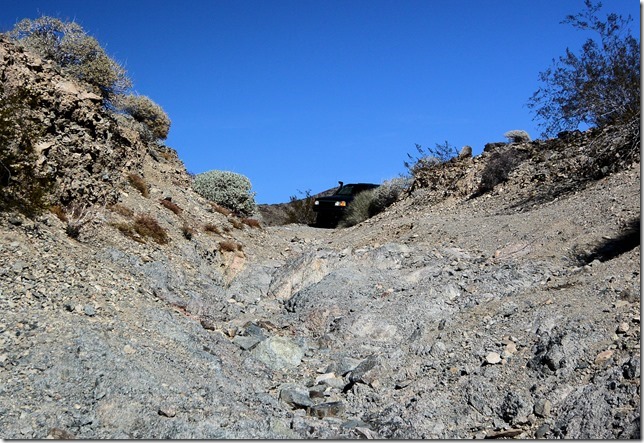
– – – an off-camber entry, but not too bad. The serious section is down near the camera.
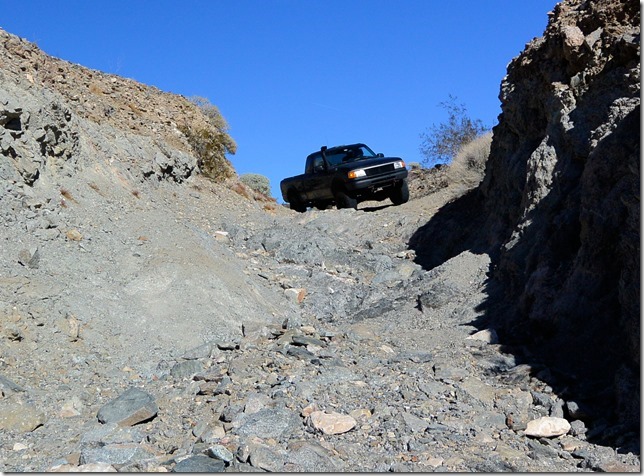
A second look, just for insurance – – –
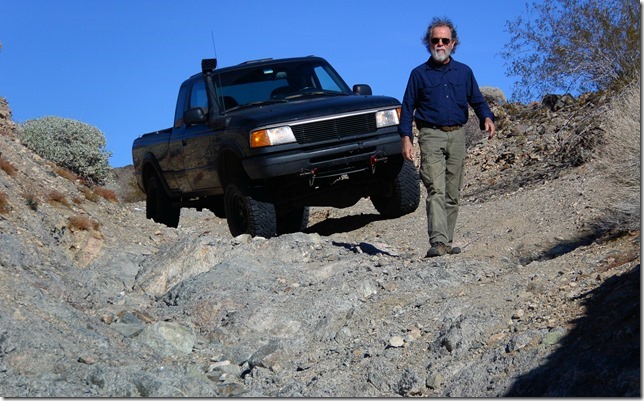
– – – across the first washout – – –
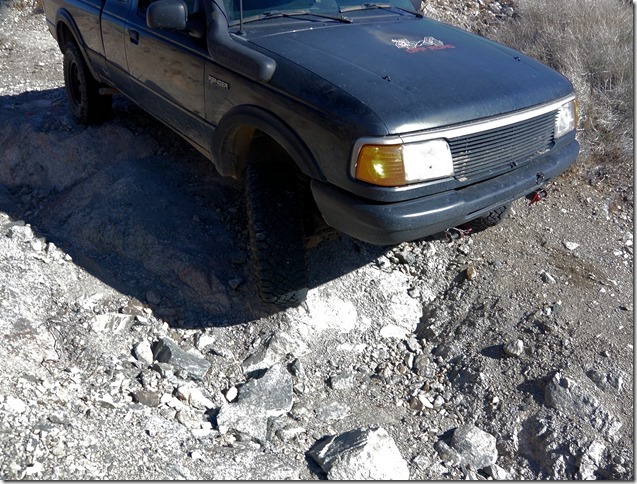
– – – past the camera-woman, over the big humps – – –
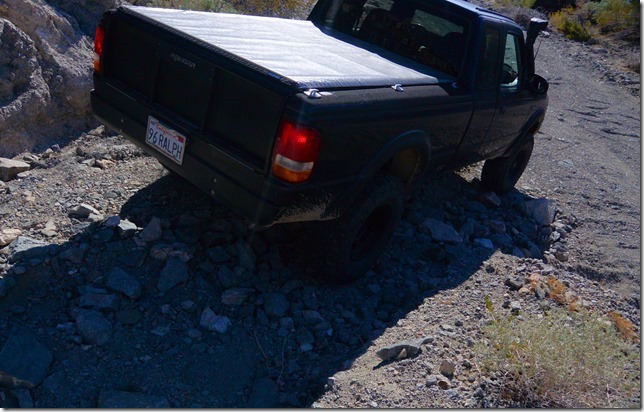
– – – finally, onto the flat sand-wash for a quick inspection to see whether the driveshaft and skidplate got married. Nope, still just dating.
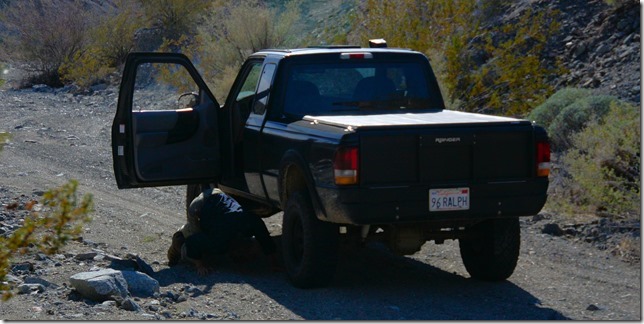
More wash-out crossings, more rocks, LOTS more rocks, and we eventually made the Pass. We stopped for lunch and a tour of the old stage-coach way station building (or what’s left of it).
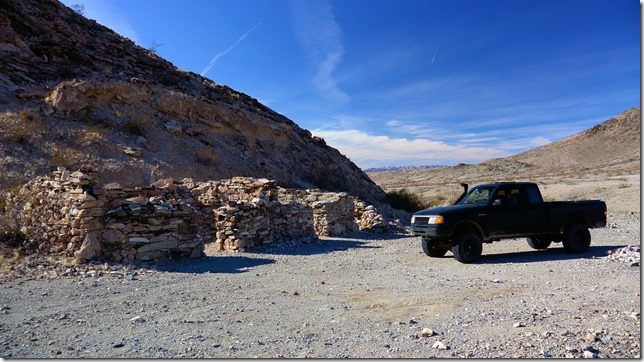
Beyond the Pass, our troubles are not over. The road is traveling cross-drainage, and every quarter-mile (or less), we have another wash-out to traverse.
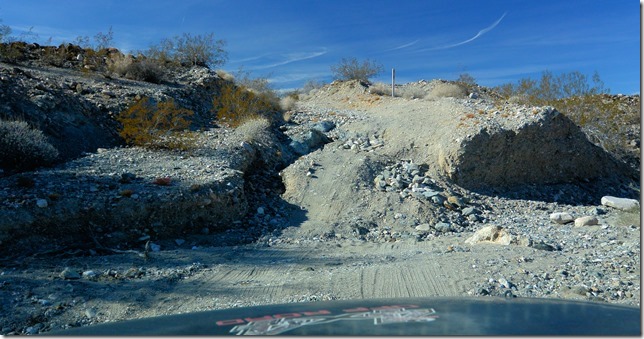
Here’s another one, a real prize-winner.
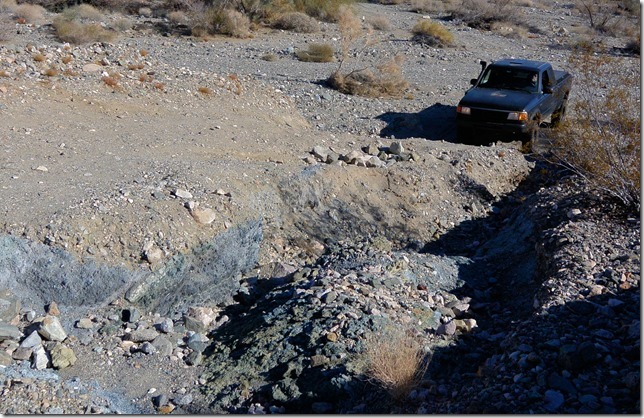
Loose, slippery rocks-on-dirt too.
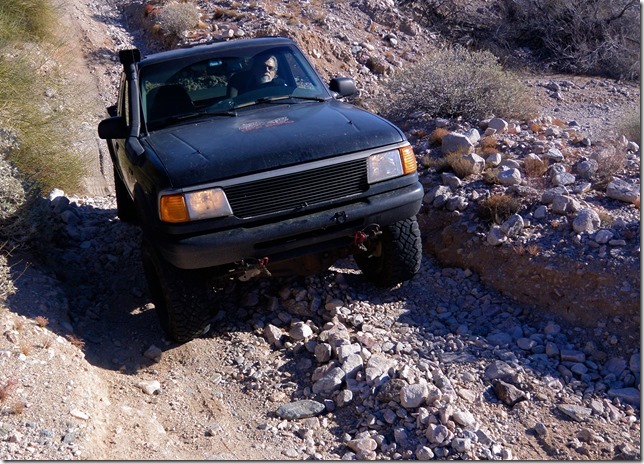
But finally, finally, the road exits the Pass, and settles down into an “ordinary” rough, sandy desert road. An aftermath of the DTC design, the remaining stretch of road shoots bowstring-straight out to SR-177.
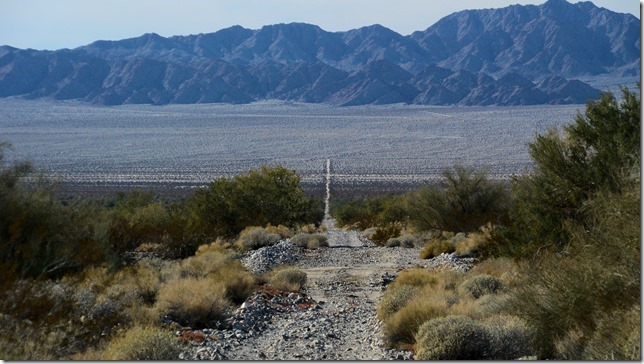
At the intersection, signage awaits. We’re apprised of the surrounding Wilderness Areas, and the history of the DTC camps. These commemorative placards are rare, many having been stolen either for souvenirs or metal scrap.
We had an outstanding day, but we traveled only 37 miles in about four hours. There was no way we’d make the remaining 70-ish miles of the loop before dark, so we boogied out onto the highway and drove the sissy way back home to Howie. The western and southern parts of the big loop will have to wait for another day.
As we approached camp, the nearby hills also reminded us of the DTC days. The flanks of the hills are still scarred by the treads of the heavy tanks, 74 years after their original maneuvers. Don’t ever let anyone tell you that “one good rain” will wash away tracks in the desert.

If you’re still curious about the DTC, see the excellent wiki page: https://en.wikipedia.org/wiki/Desert_Training_Center for a wealth of history and information.
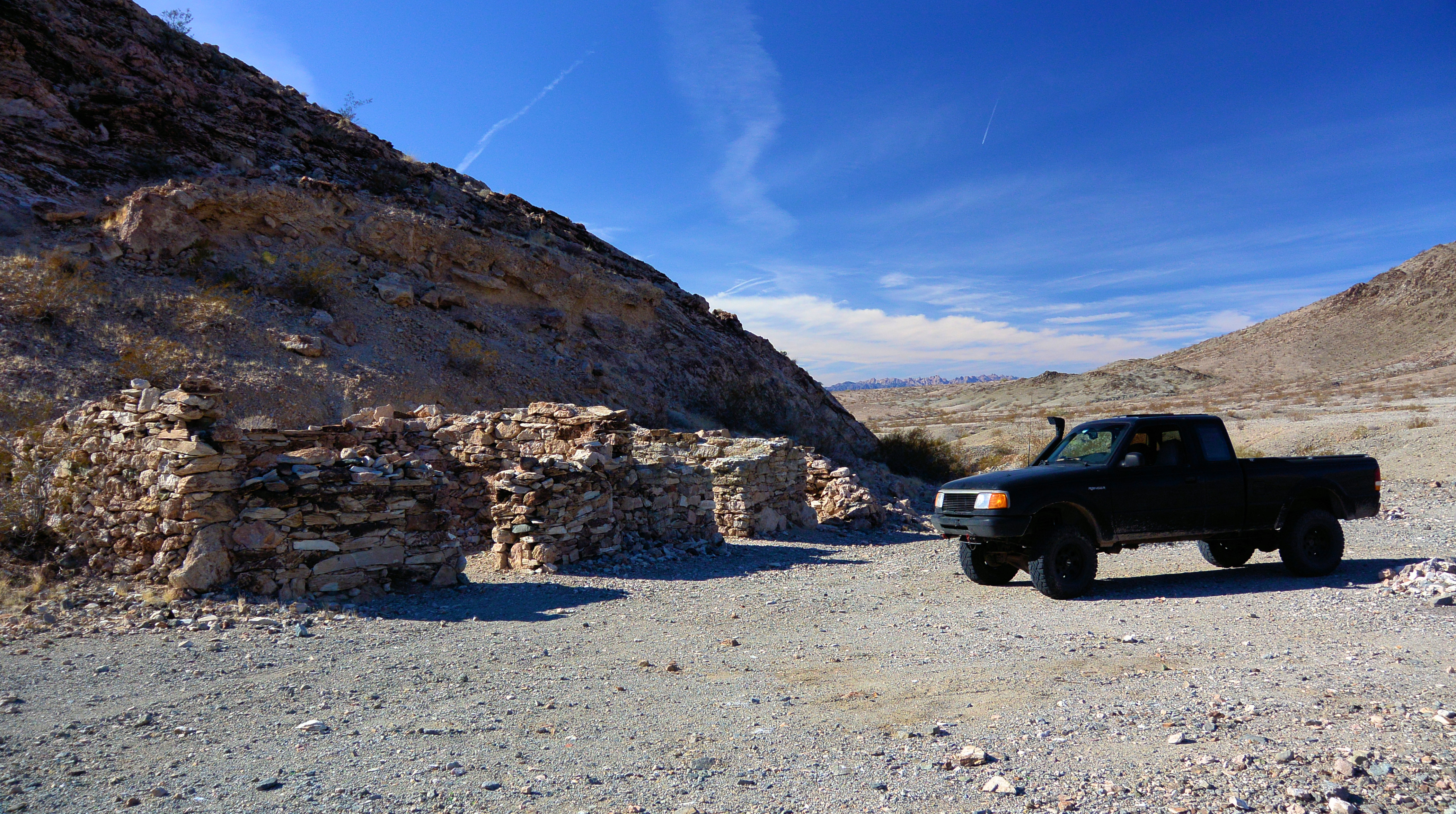
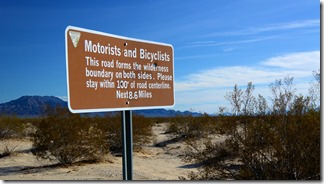
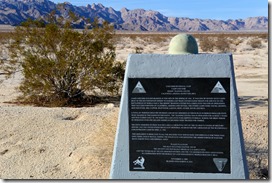
Great story and pictures, Greg and Karin! So glad to be able to experience this vicariously through your adventure, rather than attempting it firsthand. I used to do similar treks on old, washed-out logging roads in the Cascade Mountains in my ’75 Suburban when my boys were little — this brought back some good (but scary) memories! I’m glad you and Ralph survived this awesome challenge.
Our biggest concern is a breakdown, 30 miles away from even a highway, let alone a town and help. For this reason, we always travel with an InReach satellite communicator. Our cell phones are typically useless, but the InReach can text/email or even SOS to SAR if need be. Haven’t used it yet, hope never to have to, but it’s great peace of mind.
Thanks for the info, Greg. I might have to look into that, in case I’m up in the mountains and get stranded with no cell phone service (and no mechanic sons along). I’d rather be prepared and not need something, than the other way around. 😉